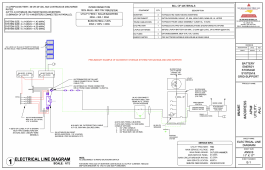Hello,
I recently joined after lurking for a while. I have been trying to thing about a feasible solar system to offset or eliminate my electricity costs. I am in North Louisiana the utility company is entergy. I was hoping to do a grid-tie system but have had a hard time deciphering entergys net metering policy. I called for clarification but all I have heard is they would get back with me which won't happen.
before 2020 it was all retail. Since then:
"During each billing month, customers will pay the applicable retail rate for all electricity (in kWh) purchased from the utility and will receive the full retail value for all electricity that they produce and use behind the meter at their home or business. Any surplus energy not used by the customer and sent back to the grid will be credited on the customer's bill at the current Avoided Cost rate of approximately $0.0368 beginning April 1, 2022."
The way I read that is if I pay my full bill at .015 per kwh and they credit me my production at .0368 per kwh. which seems like garbage. Thanks Louisiana Public Service Commission.
So, I have began to look at some sort of hybrid system. I use on average about 2800 kwh/ month. In July it was 4000 kwh, wife at home most of the month with AC on and it was 100 degrees. 4500 sq ft house, spray foam insulated 5.5" thick. Geothermal heat pump AC
To make it more interesting I have underground service coming to my house and to a barn. The underground line passes my barn where a transformer is spliced in (above ground in junction box) then continues another 1000 feet or so to my house to a second transformer. My house has a standby propane generator with auto transfer switch.
My first question is where would I even be able to tie into my house or barn? Do I need two tie points and have to run wire to each? To get on the downstream side of the meters? I would like to put a standalone solar array within a couple hundred feet of my barn but I use all the power in my house.
I was thinking 20 kw of panels to support 100 kwh average of daily use w/ 5 hours of generation time. Then I would need batteries to hold all of that energy. 20 lipo4 batteries.
Could this be arranged to where i just discharge the batteries from 7 am to 9 pm or something like that during peak usage?
Just trying to come up with the most advantageous approach. I am not necessarily trying to go off grid as I live about a mile from the power plant but, the energy rates are getting ridiculous. Not really scared of overall cost as long as payback can be realized.
Thanks for any advice,
Ricker
I recently joined after lurking for a while. I have been trying to thing about a feasible solar system to offset or eliminate my electricity costs. I am in North Louisiana the utility company is entergy. I was hoping to do a grid-tie system but have had a hard time deciphering entergys net metering policy. I called for clarification but all I have heard is they would get back with me which won't happen.
before 2020 it was all retail. Since then:
"During each billing month, customers will pay the applicable retail rate for all electricity (in kWh) purchased from the utility and will receive the full retail value for all electricity that they produce and use behind the meter at their home or business. Any surplus energy not used by the customer and sent back to the grid will be credited on the customer's bill at the current Avoided Cost rate of approximately $0.0368 beginning April 1, 2022."
The way I read that is if I pay my full bill at .015 per kwh and they credit me my production at .0368 per kwh. which seems like garbage. Thanks Louisiana Public Service Commission.
So, I have began to look at some sort of hybrid system. I use on average about 2800 kwh/ month. In July it was 4000 kwh, wife at home most of the month with AC on and it was 100 degrees. 4500 sq ft house, spray foam insulated 5.5" thick. Geothermal heat pump AC
To make it more interesting I have underground service coming to my house and to a barn. The underground line passes my barn where a transformer is spliced in (above ground in junction box) then continues another 1000 feet or so to my house to a second transformer. My house has a standby propane generator with auto transfer switch.
My first question is where would I even be able to tie into my house or barn? Do I need two tie points and have to run wire to each? To get on the downstream side of the meters? I would like to put a standalone solar array within a couple hundred feet of my barn but I use all the power in my house.
I was thinking 20 kw of panels to support 100 kwh average of daily use w/ 5 hours of generation time. Then I would need batteries to hold all of that energy. 20 lipo4 batteries.
Could this be arranged to where i just discharge the batteries from 7 am to 9 pm or something like that during peak usage?
Just trying to come up with the most advantageous approach. I am not necessarily trying to go off grid as I live about a mile from the power plant but, the energy rates are getting ridiculous. Not really scared of overall cost as long as payback can be realized.
Thanks for any advice,
Ricker



